What Is Plaster?
Important Point
This id the process of covering rough walls, uneven surfaces in the construction house and other structures with a plastic material, called plaster or mortar.
Sometimes, the term ‘rendering’ is used instead of plastering when the plaster or cement is applied to the external surface of the wall either to improve the appearance or to protect then from wether agencies, such as rain heat, etc.
Requirement of Good Plaster
To turn out to be a good plaster, the plastering material must possess to satisfy the following requirement
- It should adhere to the background and should remain adhered to during all variations of the climate changes. Also, it should be possible to apply it during all weather conditions.
- It should not contract in volume while drying and setting. Otherwise, it will crack and give an unsightly appearance.
- It should be cheap and economical.
- It should be hard and durable, providing a smooth, non-absorbent, and washable surface with required decorative effect and durability.
- It should offer good insulation against sound and high resistance against fire.
- It should effectively check the entry or penetration of moisture from the surface.
- It should possess good workability.
Also, Read: What Is Zero Force Member for Truss | How to Identification of Zero Force Members in Truss
Requirement of Good Plaster
- It should be hard and durable.
- It should possess good workability.
- It should be possible to apply it during all weather conditions.
- It should Cost Efficient.
Types of Plasters
- Browning plaster.
- Bonding plaster.
- Thistle plaster.
- Carlite plaster.
- Hardwall plaster.
- Dri-coat plaster.
- One Coat plaster.
- Tough coat plaster.
Also, Read: What Is Falsework | Types of Falsework |Causes of Falsework Failures
#1. Browning Plaster.
British Gypsum Thistle Browning Plaster undercoat plaster used to provide a smooth, high quality, flat surface to internal walls and ceilings and a durable base for the application of decorative finishes.
#2. Bonding Plaster.
Similar to browning plaster, bonding plaster is also considered as an undercoat on which other things are added.
As mentioned earlier, it is an undercoat plaster, which means it is the first coat to be applied to a newly patched wall.
Also, Read: What Is Cross Drainage Work | Types of Cross Drainage Works | Syphon Aqueduct
#3. Thistle Plaster.
Thistle plaster products are designed to suit either hand or machine application.
Their consistent performance, workability and reliability are assured thanks to our exacting manufacturing standards, which enable plasterers to maximise productivity and cut product wastage on site.
Backed up by a range of compatible, high quality accessories, Thistle plasters produce a high quality surface that’s tough and durable.
Thistle plasters meet all customer demands for an aesthetic, low maintenance internal surface finish for a range of standard and specialist applications.
#4. Carlite Plaster.
Carlite plasters provide a smooth high quality surface to internal walls and ceilings. They also provide a durable base for the application of decorative finishes.
The range includes two-coat plastering (using basecoat & finish coat plaster), finish plastering over plasterboards and special application plasters.
The plasters can be used in both new buildings and refurbishment and can be applied to all common background types.
Specialist applications include:
- X-ray protection
- Projection plastering
- Airtightness
- Salt retarding plastering
Carlite plasters are pre-mixed and only require the addition of clean water. They have a controlled setting time
and are free from inherent shrinkage cracking.
All plasters are predominantly supplied in 25kg bags for ease of handling and storage.
Limitations
- Carlite plasters should not be used to isolate dampness.
- Not suitable for use in continuously damp or humid conditions.
#5. Hardwall Plaster.
Hardwall Plaster is usually applied over cement render or concrete to provide a smooth finish for painting or decoration.
It is easy to trowel making initial application and finishing easier. When used with hydrated lime (lime putty), a high gloss finish is produced.
Typical Applications of Hardwall Plaster
-
- Hardwall Plaster is typically used in both residential and commercial construction as a finishing coat over cement render or concrete in preparation for painting.
- When used with hydrated lime (lime putty), a high gloss finish is produced which can be waxed to create a decorative finish.
-
- In hot or dry conditions it may be necessary to wet the surface before application to prevent the plaster drying out before setting.
#6. Dri Coat Plaster.
- Thistle DriCoat is the only plaster recommended for re-plastering walls following damp-proof course treatment.
- Heavy salt contamination in the background can cause persistent damp problems.
- Conforms to EN 998-1.
- This product is certified to BES 6001 achieving a rating of ‘Excellent’
- Available in 25kg bags.
Also, Read: IS 1200 Important Point Part-2
#7. One Coat Plaster.
- Plastering provides your walls and ceiling with a smooth, durable coating.
- One coat plaster is a particular kind of plaster created to offer a simpler approach to plastering.
- It allows for application with fewer steps since this plaster acts as base and finishing coat in one.
#8. Tough Coat Plaster.
- Thistle Tough Coat is a gypsum undercoat plaster for use on most masonry.
- With a final coat of Thistle Multi-Finish, it provides a smooth, inert, high quality surface to internal walls.
- It is suitable for application by hand or by plaster projection machine.
What Is Plaster Made Of?
plaster, a pasty composition (as of lime or gypsum, water, and sand) that hardens on drying and is used for coating walls, ceilings, and partitions. Plastering is one of the most ancient building techniques.
Is Plaster Better Than Drywall?
For one thing, plaster is by nature a more durable finish than drywall, even high-level drywall finishes. In addition, plaster outperforms drywall in a number of key areas, including insulation, soundproofing, and fireproofing. One additional point in plaster’s favor is that by nature, mold can’t grow in plaster.
Is Lath and Plaster Better Than Drywall?
Lath and plaster walls provide a room with better soundproofing, as opposed to drywall walls of an ordinary thickness (1/2-inch). Soundproof drywall, though, rivals lath and plaster walls in terms of soundproofing. Lath and plaster walls have a slightly better insulating R-value than do drywall wall systems.
Requirements of Good Plaster
- It should adhere to the background, and should remain adhered during all variations in seasons and other atmospheric conditions.
- It should be hard and durable.
- It should possess good workability.
- It should be possible to apply it during all weather conditions.
- It should be cost efficient.
Single Coat Plaster
Single coat plaster
It is a single application process that replaces both cement plaster and POP (punning), with direct application on brick, concrete or block. This provides for quick ready internal plaster. Unique additives added to gypsum give control to setting characteristics and a super smooth finish.
Plaster Browning
Browning plaster
Browning plaster is a decorative plaster that’s used as a base for paint and other decorative endeavours. It’s very similar to bonding plaster, but more absorbent, and thus most useful with more absorbent surfaces. They are used by professional plasterers as an undercoat for paint and adornments.
Requirements of Plastering
- It should adhere to the background and should remain adhered during all climatic changes.
- It should be cheap and economical.
- It should be hard and durable.
- It should be possible to apply it during all weather conditions.
- It should effectively check the entry or penetration of moisture from the surfaces.
State Four Requirements of Good Plaster
- It should adhere to the background and should remain adhered during all climatic changes.
- It should be cheap and economical.
- It should be hard and durable.
- It should be possible to apply it during all weather conditions.
It Means That the Plaster Should Be Resistant to Moisture Penetration
The plaster is made from a mixture of gypsum, perlite, and other additives that give it improved strength, durability, and water resistance. It is often used in areas such as bathrooms, kitchens, and other spaces where moisture is a concern.
Good Plastering
Good plastering involves creating a smooth and even surface on walls, ceilings or other surfaces by applying plaster or other materials such as joint compound or mud.
What Is Plastering?
Plastering is a process of covering and smoothing over uneven surfaces on walls, ceilings, and other structures with a mixture of plaster, water, and sometimes other materials like sand or cement. The plaster is applied with a trowel and can be used to create a smooth, even surface that is ready for painting or wallpapering.
Dry Coat Plaster
Dry coat plaster is designed to provide a smooth finish to walls and ceilings, and can be used for both internal and external applications. It is typically used for small-scale projects, such as repairing cracks and holes in walls, or for creating a smooth surface for painting or wallpapering.
What Are the Requirements of Good Plaster?
Good plaster should meet the following requirements:
- Adequate Strength: Plaster should have enough strength to resist any external forces or loads that may be applied to it without cracking or breaking.
- Durability: Plaster should be able to withstand wear and tear, weathering, and other environmental factors over a long period of time.
- Cohesiveness: Plaster should be able to adhere well to the surface to which it is applied and form a strong bond.
- Workability: Plaster should be easy to apply, smooth, and even.
Like this post? Share it with your friends!
Suggested Read –
- Types of Plaster
- What Is Gypsum Plaster
- What Is Bridge Abutment | Types of Abutments
- What Are Planted Column, Floating Column, Hanging Column, and Stub Column
- Luminous Flux Vs Lumens | What Is Luminous Flux | What Are Lumens | How Bright Is 1000 Lumens
- What Is Mix Design of Concrete | Nominal Mix | Design Mix| Difference Between Nominal Mix and Design Mix
- Meaning | What Is Waterlogging | How to Prevent Waterlogging | Effect of Waterlogging | Causes of Waterlogging
- How to Build a Suspension Bridge | Suspension Bridge Facts | Suspension Bridge-Strength & eaknesses | Advantages and Disadvantages of a Suspension Bridge
Originally posted 2023-04-12 19:07:55.

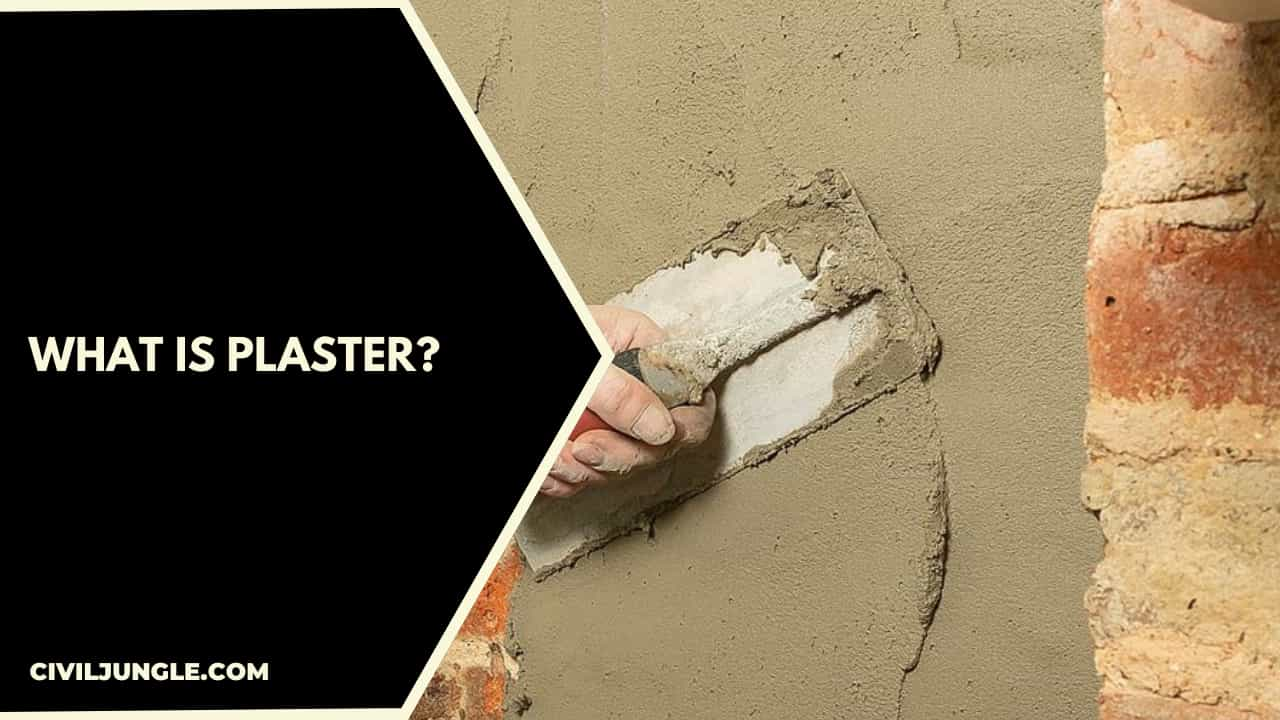
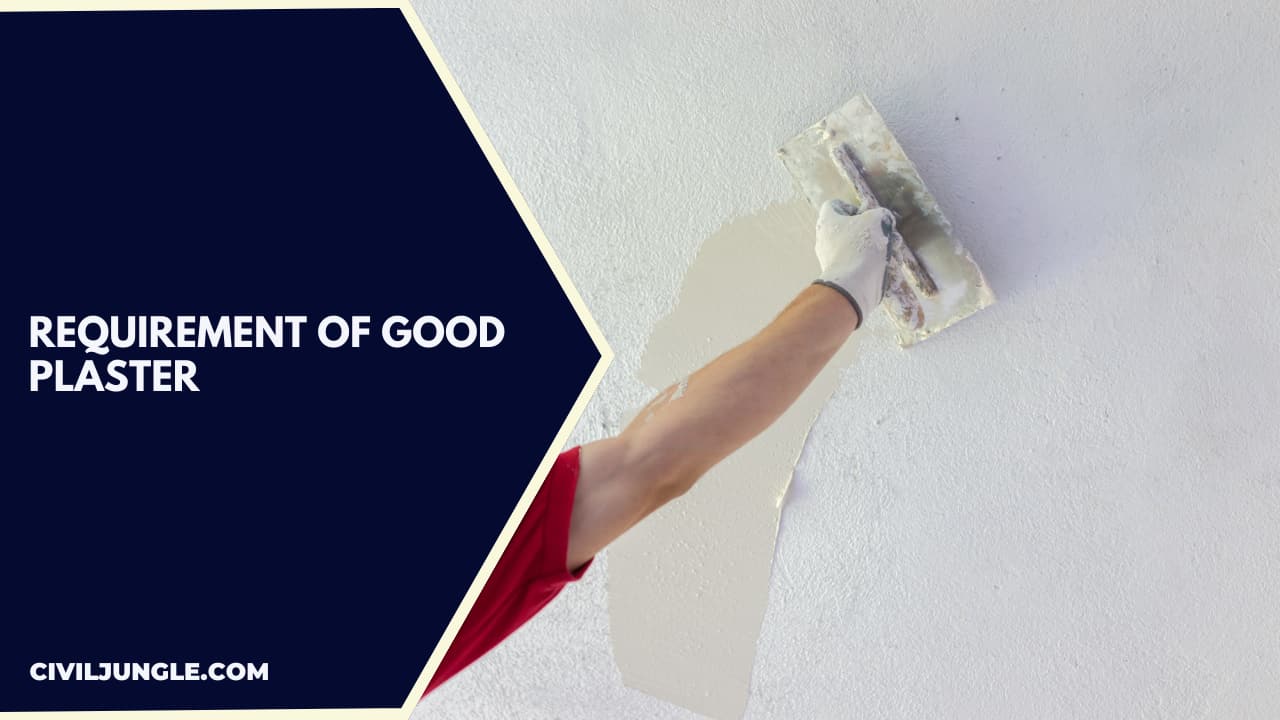
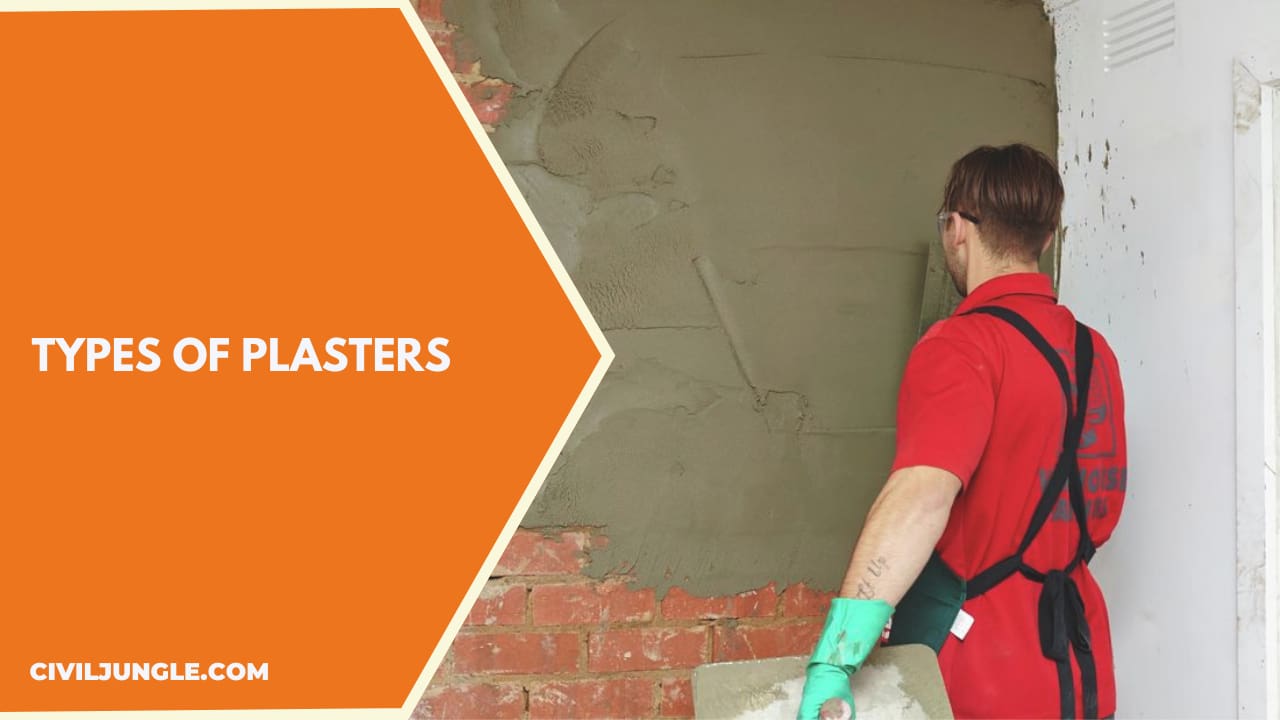

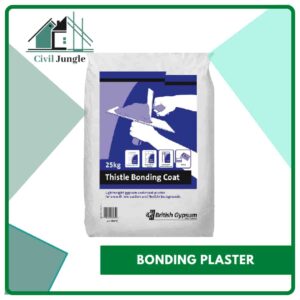
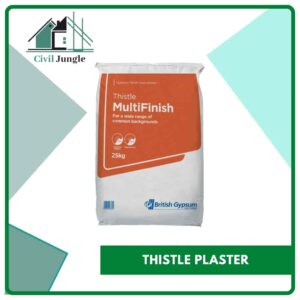
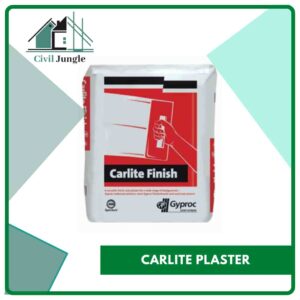
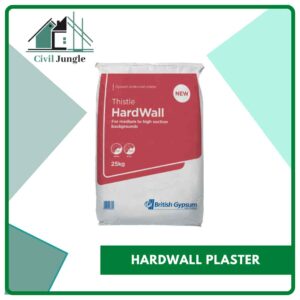
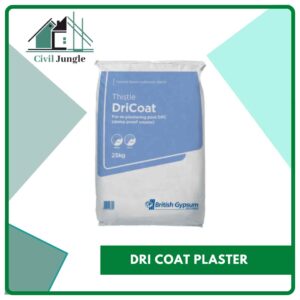
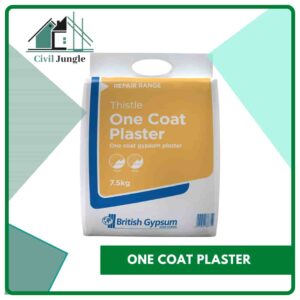
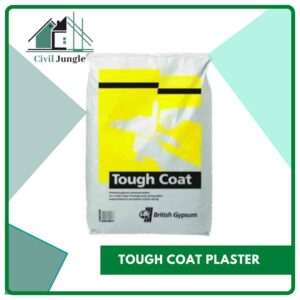

Leave a Reply